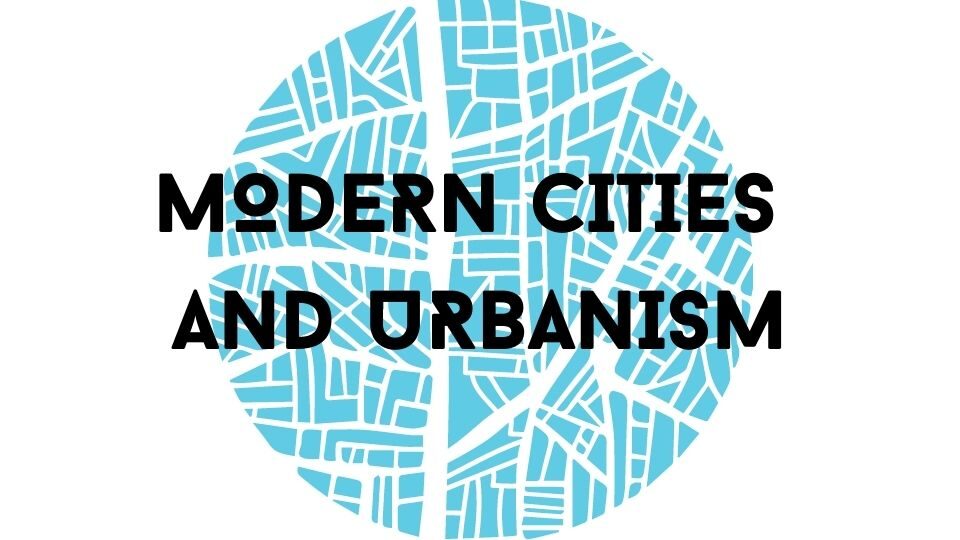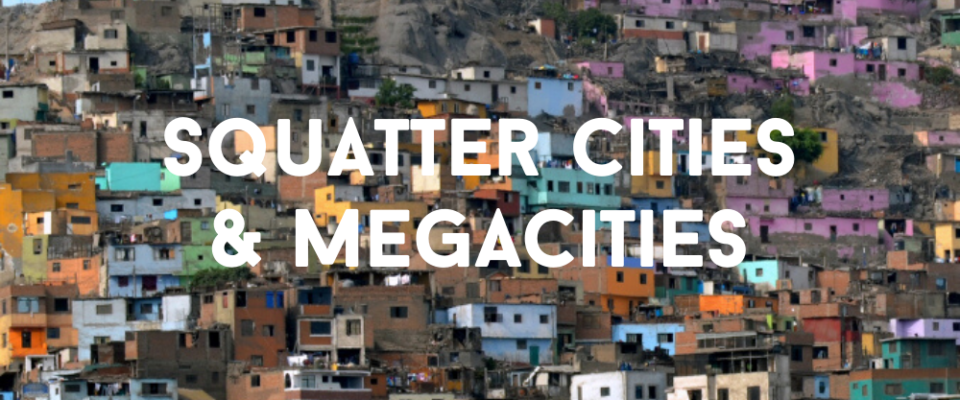Introduction
One of the most noticeable changes in the urban landscape of China since the economic reform in the late 1970s was the “encroachment of rural settlements” by the rapidly expanding cities (Song, et. al 2008, 314). This specific process led to the formation of what is frequently referred to as “villages in the city” (chengzhongcun), or urban villages. Due to lack of administrative and financial power of the city, as well as stronger resistance from the villagers against total reclamation, the urban villages became vital parts of the city, which not only house many of the rural migrants, but some of which also produced their own school and health care system. These urban villages are usually characterized as being “messy” and “chaotic,” and are associated with concerns with fire safety and crime (Wong 2018, 1072). The phenomenon of urban villages is especially prominent in the Pearl River Delta (PRD) region. The following report seeks to explain the phenomenon of urbanizing villages in Guangzhou by examining the historical context for Guangzhou’s urban expansion and interaction between the rural and urban areas. The literature review will be divided into two parts: 1) periodization of Guangzhou’s urban development and 2) process and prospects of rural-urban integration.
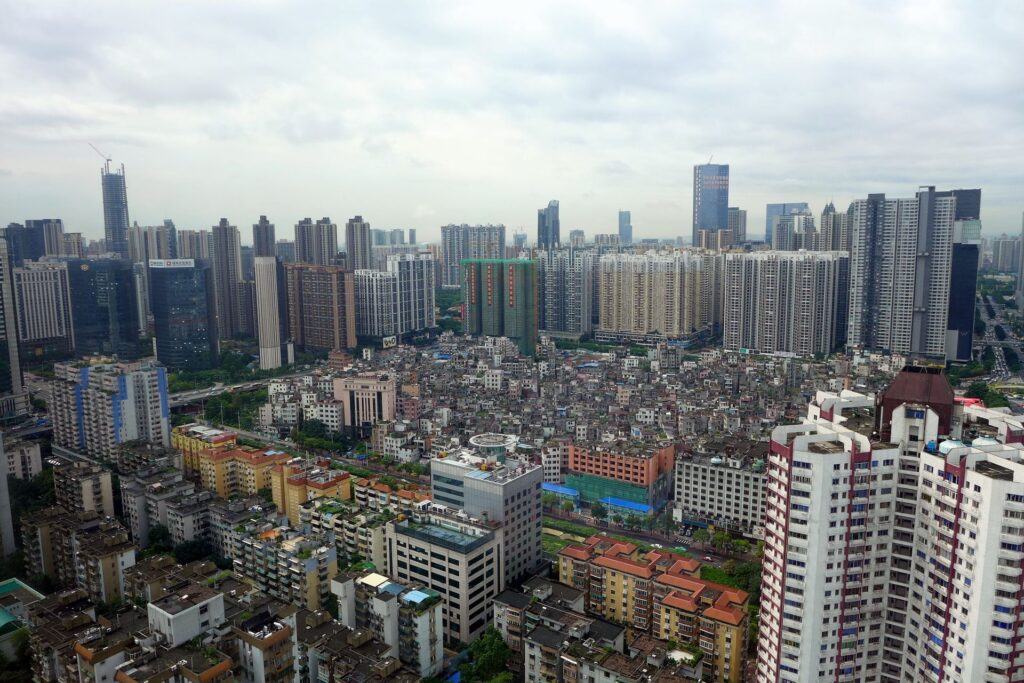
Periodization of Guangzhou’s Urban Development
Pre-1949: the preconditions
Historically, cities in China were surrounded by walls, as illustrated by the Chinese character for city, “cheng” (城) (Yuan 2014, 64). The highly centralized cities created the context for what Wheatley refers to as providing spaces for primary urbanization. In addition, Guangzhou epitomized what Skinner (1977, 258-261) characterizes as the “rural-urban continuum” in the region of Lingnan. In fact, on the rural-urban continuum, many urbanizing villages were established since the Southern Song Dynasty (CE 1127-1279) (Hsing 2010, 144). These villages are composed of families who fled from the North and become the spatially bounded and ethnicity-based villages that are later incorporated into Guangzhou’s urban expansion (Wong, et al. 2018, 1067). Besides, Guangzhou’s modernizing image and status can also be attributed to its history as a treaty port city, which had a major psychological effect on China’s view of a traditional interior and modernizing coastal area (Guldin 1992, 19-21).

Pre-Reform Era: Industrial Basis and Limited Urban Development
Starting from 1949, Guangzhou was undisputedly the industrial base for Guangdong. In 1996, Guangzhou contributed to 23 percent of Guangdong’s industrial output with only 10 percent of the population (Cheung, 1999). The First Five Year Plan indicates the re-categorization of development plans for Guangzhou from an “industrial city” (1952) to a “major industrial city” (1954) (Zhu 1999, 18-9). From 1953-78 Guangzhou’s average annual GDP growth rate was 8 percent but was limited compared to that of 1981-90 (12 percent) (Chung, 1999). However, the period is characterized by strict urban control and limited freedom of movement from rural to urban China.
Reform Era: Expanding to the Periphery
Guangzhou experienced significant growth during the reform era. Cheung’s comparative study of Guangzhou and Tianjin addresses aspects that allowed Guangzhou’s economy to take off (Chung 1999, 18-47). According to Cheung, geography, and preferential status for a coastal open city (1984) and a centrally planned city (1985-1993) granted Guangzhou an edge in seeking foreign investment. On the provincial level, the increased pressure on providing remittances to the provincial government faced by Guangzhou urged it to seek foreign investment and other sources of capital.
A mixture of educated technocrats (Gao Siren and Zhu Senlin) and grass-root reformists (Li Zhiliu) of the top leadership shaped Guangzhou’s economic policy into one that focuses on marketization, attracting foreign investments, and the co-prosperity of the urban-rural continuum. According to Lam, Li Zhiliu had a decisive influence over the development of the suburban areas, as he emphasized the co-prosperous growth of urban and suburban by decentralizing power to the suburban counties (Chung 1999, 274-9). In other words, the marketization of Guangdong’s economy and decentralization of power allowed some of the suburban areas to gain wealth.
Rural-Urban Integration and Compromise: Villages in the City
As the previous section provides a historical insight on the background on the strategies and directions of Guangzhou’s urban development, the following section seeks to examine the formation of villages in the city under this context and the interactions between the urban and the rural.
The Dual Structure
The urban-rural dual structure refers to the Chinese residential registration system (hukou) that divides its population into either urban or rural, as well as the two parallel systems of policies associated with the urban or rural hukou (Wong 2015, 890-2). The rural system is distinctly different from an urban one and is characterized by the cooperative ownership of arable land that was gradually installed throughout the 1950s (Geddes 1963, 34-5). On the other hand, cities in China were heavily focused on industrialization, and were organized in danwei, a system that before its abolishment in the 1980s provided cradle-to-death care and arrangement for urban workers (Zhu 1999, 48). In fact, Wu discusses that the central government’s policy to favor cities for industrialization and the continued supply of food from the rural villages to the cities formed the dual structure which is disadvantageous to the rural farmers and turned them into “the second-class citizens (erdenggongmin, 二等公民).” (2001, 35-43). Such rigidity become a long-standing problem for urban villages and the stymie that migrant workers face in the city of Guangzhou (Logan 2008, 227-9).
Urban Fringes
The definition of urban, in the case of Guangzhou and many other municipalities, is composed of an urban core, or an “urban area” (shiqu, 市区) and a rural hinterland (xian, 县). This phenomenon is described by Guldin (1992, 194-198) as the “not unambiguously ‘urban’” (See figure 1&2). In 1987, Baiyun district, or the “suburban district,” had the largest population of the eight administrative districts under Guangzhou, but 73% of its population was rural. Besides, increasing “rural industrialization” and a decrease in agriculture engagement due to agricultural reform in the nearby counties (such as Huaxian and Panyu) also signified the decrease in a distinction between rural and urban. In addition, Hsing suggests that because of the connectedness of communication and interaction between these rural and urban areas, the urban metropolitan in China should follow the administrative borderline that includes the expansive rural area (2010, 10-14).
On the other hand, increasing industrialization in both cities and rural villages inspired an enormous number of rural migrants to search for opportunities in Guangzhou and its surrounding suburban areas. According to the Guangdong Statistical Bureau (GDSB), the population in the PRD increased from 9.03 million in 1978 to 16.62 million in 1988, while industrial production increased from 20.35 billion yuan to 40.65 billion yuan (Guldin 1992, 197).
Village Corporatism in Guangzhou
As land became the most profitable source of income for the local government due to the confirmation of state tenure over urban land and subsequent land commodification, land development has become the arena of local state-building. The switch in the direction of urban construction to what Hsing characterizes as a “territorial project” of local state building signifies the importance of “territoriality,” or the spatial strategies to consolidate power in the urban-rural interaction (2010, 5-19).
As local state government seeks to strengthen its power and revenue through land requisition and redevelopment of the previously rural area, the villages respond with a non-confrontational resistance to bargain for better gains from the process. Wong described the land requisition process as a power-play between the local government and the villagers (2015, 888-906). While villagers demonstrated their resistance to the exploitative land requisition policy, the government devised the “reserved commercial land” policy that allowed the villagers to benefit from the process of urbanization (Wong 2014, 691-2). Similarly, Hsing suggests that the Guangzhou government actively chose the policy of “reserved housing” (zhaijidi) and reserved commercial/construction land to be relieved from the pressure of providing relocation housing to the villagers (2010, 122-45). According to Liang, the villagers built up these “dense clusters and walk-ups,” or buildings that were built or altered to maximize the height and space for rent (2014, 175-182). Liang explains that villagers were able to maximize profit from the reserved construction land by collecting as much rent from the urban migrant workers who make up most of the residents in the urban villages (Liang 2014, 175-182). These clustered residential and commercial areas of the villages became the “villages in the city” in Guangzhou.
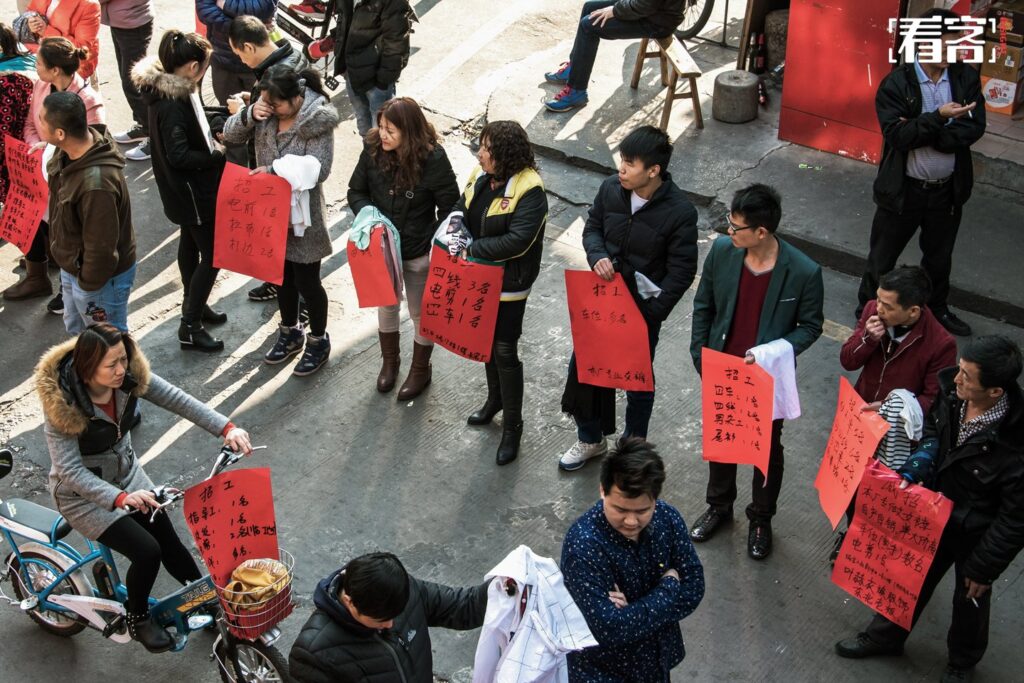
On the other hand, Hsing devised the term “village corporatism” to describe the non-confrontational bargaining strategy used by the villagers in the PRD (2010, 122-45). Both authors emphasize the important role of shareholding companies in empowering the villagers. The Shareholding Cooperative System (SCS) became essential to providing a steady source of income, provider of welfare (education, health care system, employment), and the broker between the villagers and the government. Hsing describes the shareholding companies’ role as an extension of the city government that provides stability because there was a lack of the financial and administrative capacity of the municipal government, which in return tolerated the unauthorized construction that took place within the urban villages. Scholars such as Yuan take a more empathetic approach to examine how the “progressive sense of place” is demonstrated by the lives of rural migrants in urban villages (2014, 314-6). Through extensive fieldwork and interviews with the residents of urban villages, Yuan was able to reach the conclusion that the rural migrants were able to find a sense of “at home” even in this seemingly dilapidated environment (Yuan 2014, 314-6).
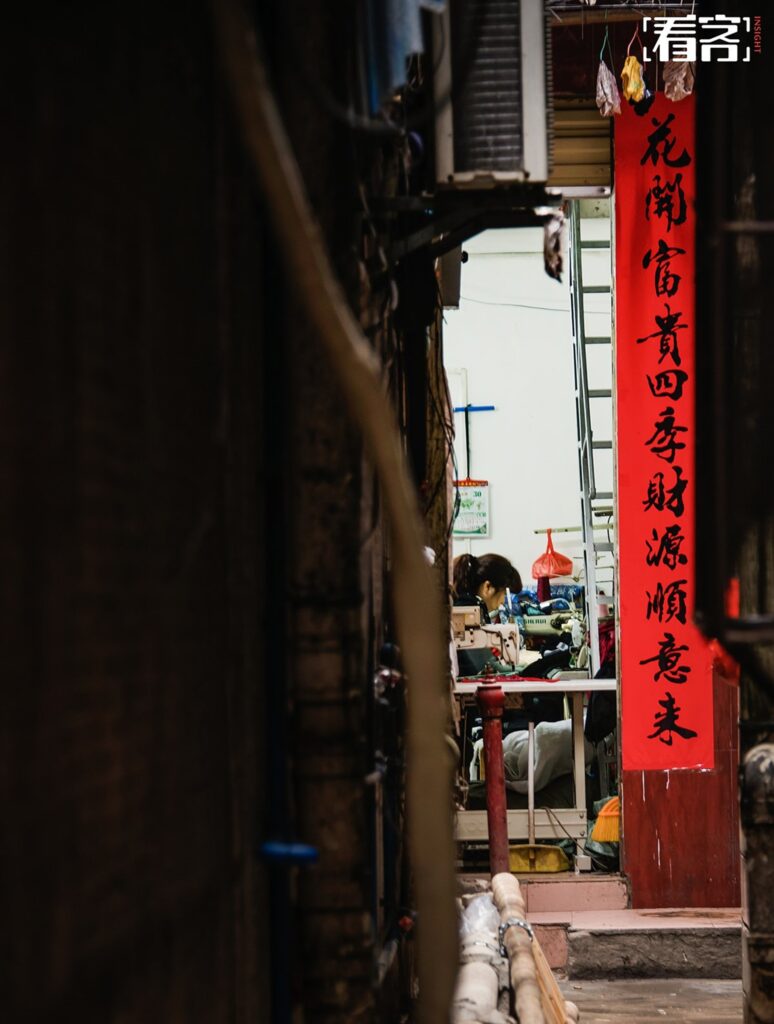
A Look into the Future
More recent literature seeks to devise an optimal model for the redevelopment of urban villages. Ling et.al proposed four methods for a gradual transformation of rural to urban property rights based on the case study of Liede, including “decentralized governance, public-collective-private governance, collective-private governance, and self-governance” (Lin 2015, et. al). Similarly, Lin, Hao, and Geertman suggest a conceptual framework through which the three stakeholders (state, market, and society) work collaboratively for the sustainable redevelopment of urban villages (2015, 1774-89). Wong, Tang, and Liu suggest the benefit of “informality” and “segregation,” which suggests a redevelopment plan should not only involve the village cooperative but should also device a sustainable solution for the urban migrants (2018, 1064-5).
Conclusion
This literature review has focused on two aspects that are important in understanding the villages in the city, or urban villages, in Guangzhou, including the periodization of Guangzhou’s urban development and the frameworks under which rural and urban Guangzhou interact. From examining literature about pre-1949 Guangzhou, we can see the roles of primary urbanization, the rural-urban continuum, and the existence of strongly connected natural villages. From 1949 to the reform era, Guangzhou’s economic development, marketization of the economy, and emphasis on suburban development also led to the growth of stronger rural areas.
On the other hand, the long-existing dual-structure of the rural and urban registry and the ambiguity of the urban fringe create a mixture of incentivized movement of urban migrants and floating status of villages that are locationally urban but essentially of rural identity. Moreover, after land reform in the 1980s, urban villages became more prominent, as the city expanded its territories while the villagers without their farmland maintained their residential and commercial land as their bargain with the government. The village cooperatives also serve as an information broker between the villagers and the government. Therefore, urban villages in Guangzhou remained as an organic result of an urbanizing Guangzhou and the hukou system.
As some urban villages underwent redevelopment in the 21st century, more studies were conducted regarding the policies and methods through which the urban villages should redevelop, with concerns over both the villagers and urban migrants who usually become the most disadvantaged during the redevelopment process.
Bibliography
Chung, Jae Ho. Cities in China: Recipes for Economic Development in the Reform Era. Routledge Studies on China in Transition 7. London; Routledge, 1999.
Geddes, W. R. Peasant Life in Communist China. Society for Applied Anthropology. Monograph No. 6. Ithaca, N.Y: Society for Applied Anthropology, 1963.
Guldin, Gregory Eliyu. Urbanizing China. Contributions in Asian Studies, No. 2. New York: Greenwood Press, 1992.
Hsing, You-tien. The Great Urban Transformation Politics of Land and Property in China. Oxford; Oxford University Press, 2010.
Liang, Samuel Y. Remaking China’s Great Cities: Space and Culture in Urban Housing, Renewal, and Expansion. Abingdon, Oxon: Routledge, 2014.
Lin, Yanliu, Pu Hao, and Stan Geertman. “A Conceptual Framework on Modes of Governance for the Regeneration of Chinese ‘Villages in the City.’” Urban Studies 52, no. 10 (2015): 1774–90.
Li, Ling Hin, Jie Lin, Xin Li, and Fan Wu. “Redevelopment of Urban Village in China – A Step Towards an Effective Urban Policy? A Case Study of Liede Village in Guangzhou.” Habitat International 43 (2014): 299–308.
Liu, Zhuojun. Institutional Change in Urbanizing China: A Case Study of Rural Shareholding Cooperatives in Guangzhou. BiblioBazaar, 2017.
Logan, John R. Urban China in Transition. Studies in Urban and Social Change. Malden, MA; Blackwell Pub, 2008.
Siu, Helen F. “Grounding Displacement: Uncivil Urban Spaces in Post-Reform South China.” In Tracing China: A Forty-Year Ethnographic Journey, 1st ed., 353–82. Hong Kong University Press, 2016.
Song, Yan, Yves Zenou, and Chengri Ding. “Let’s Not Throw the Baby Out with the Bath Water: The Role of Urban Villages in Housing Rural Migrants in China.” Urban Studies 45, no. 2 (2008): 313–30.
Wu, Xiang and 吴象. Recording China Rural Reform (Zhongguo nongcun gaige shilu). 1st Edition. Hangzhou: Zhejiang ren min chu ban she, 2001.
Zhu, Jieming. The Transition of China’s Urban Development: From Plan-Controlled to Market-Led. Westport, Conn: Praeger, 1999.
